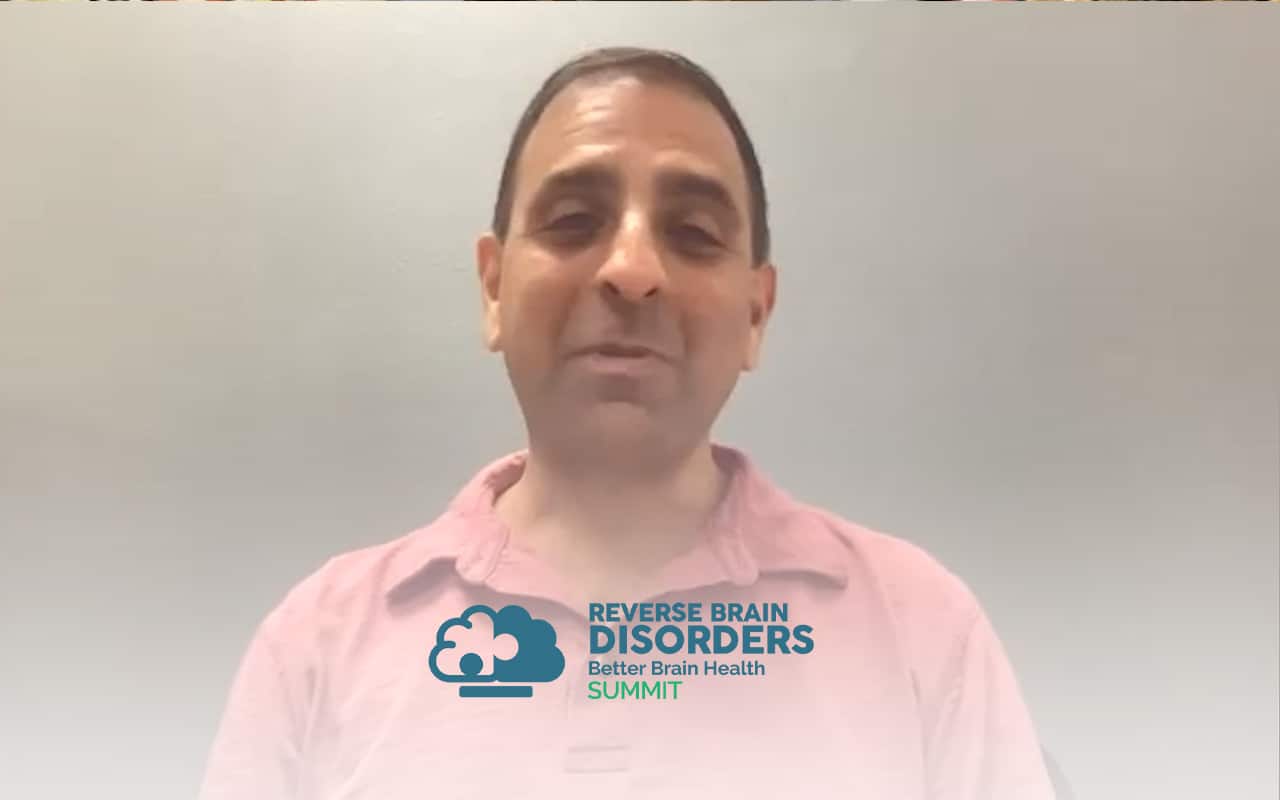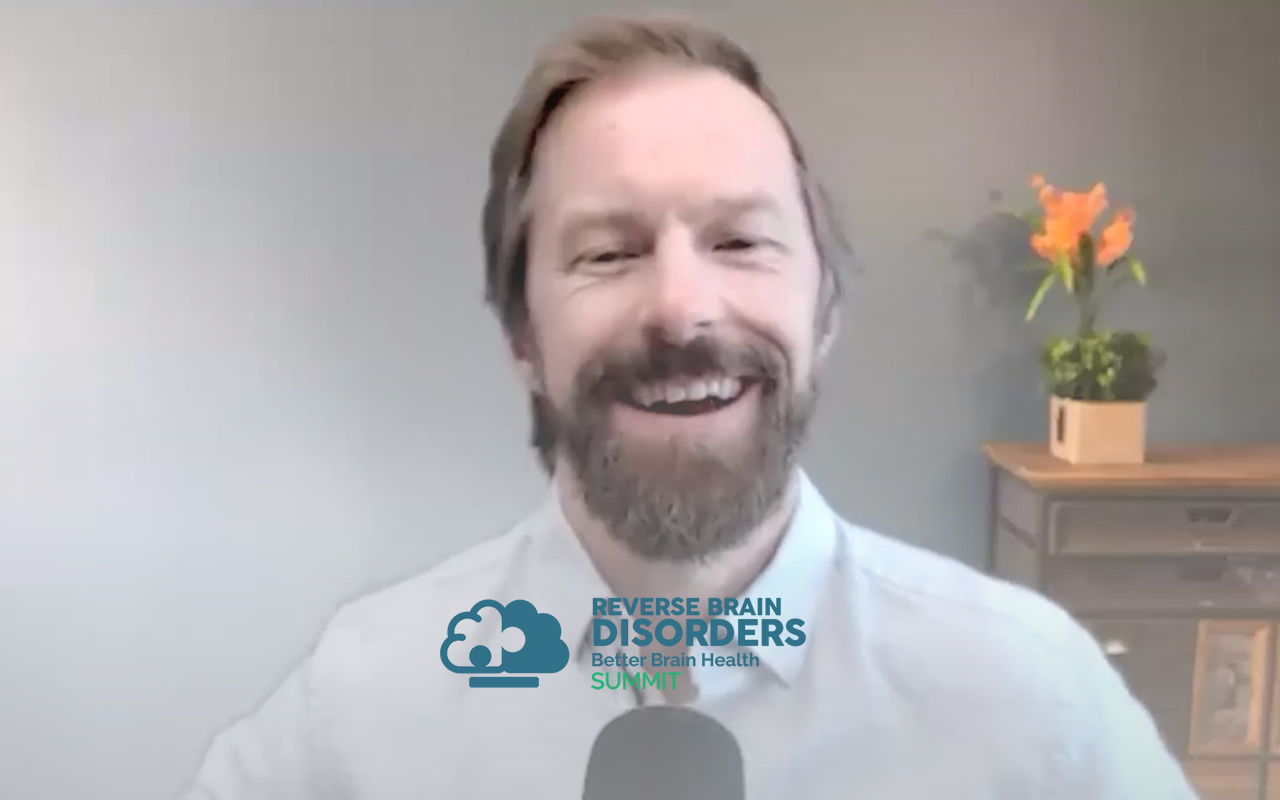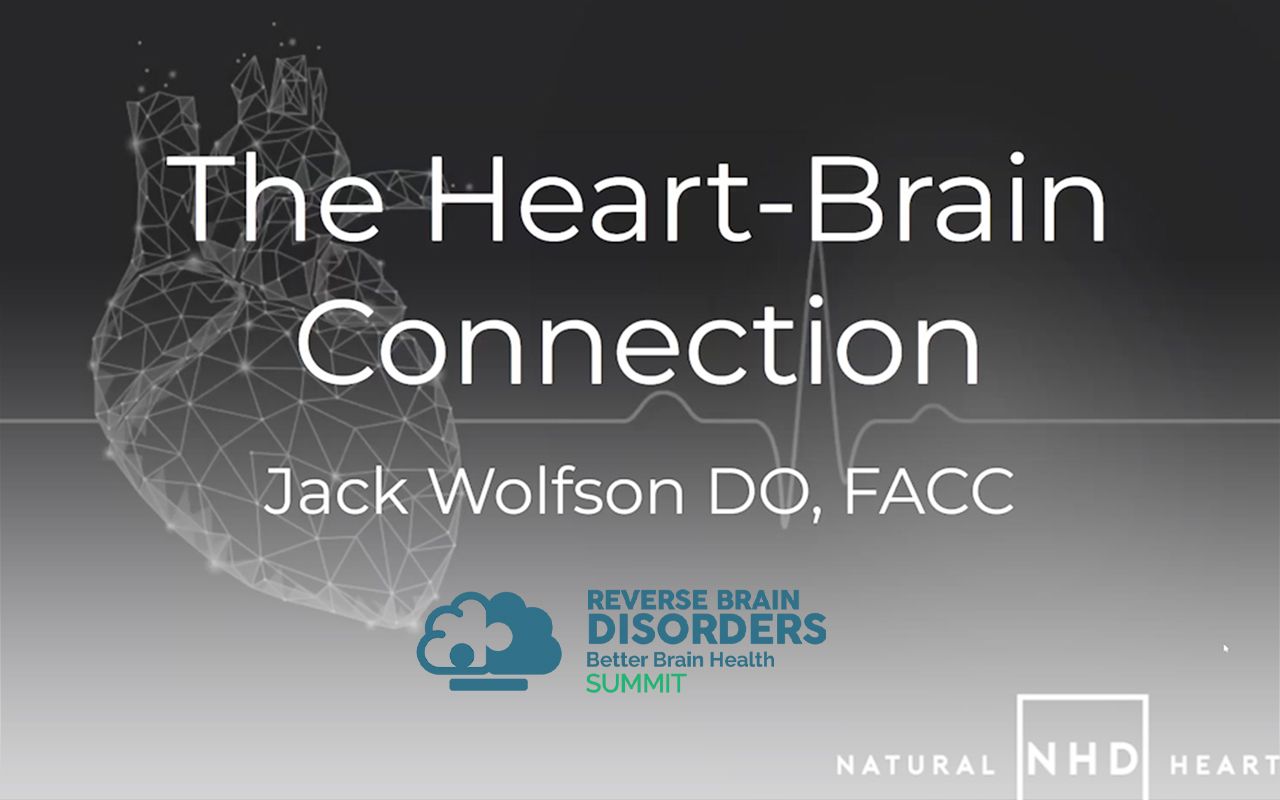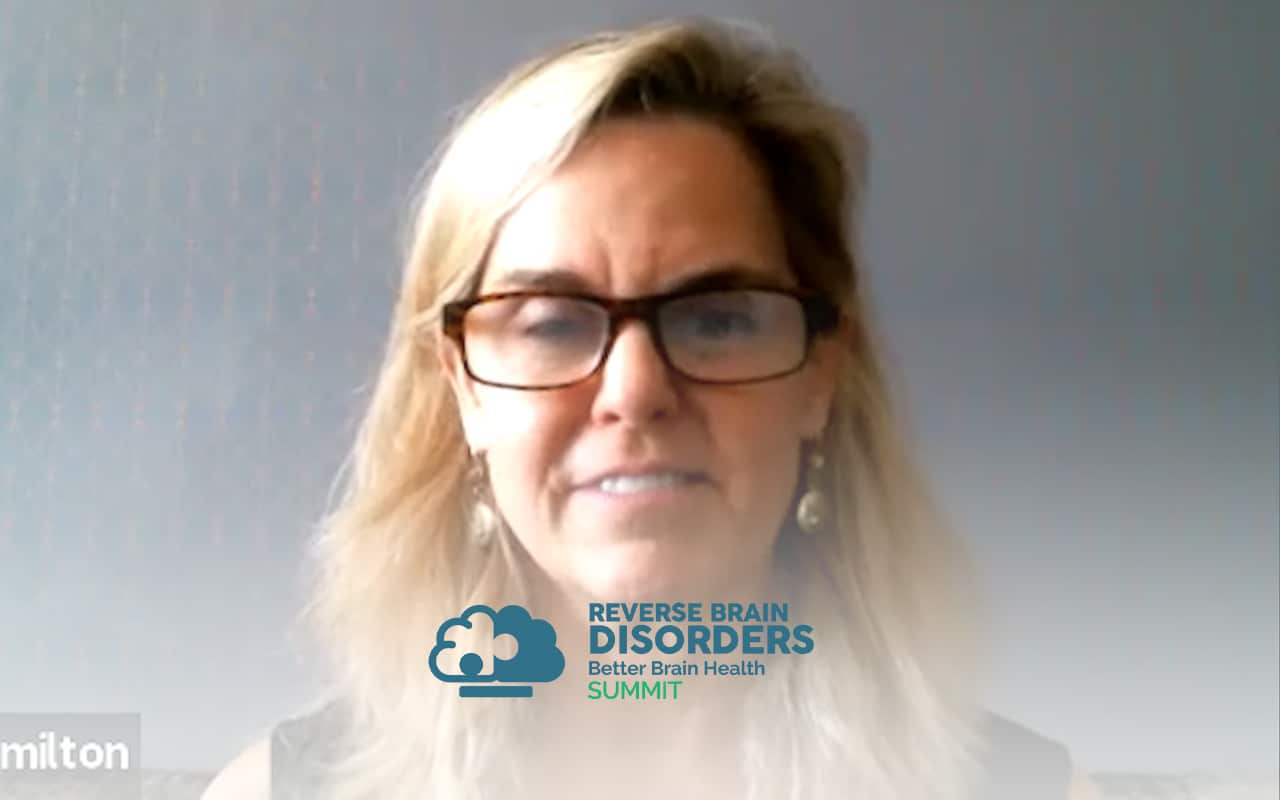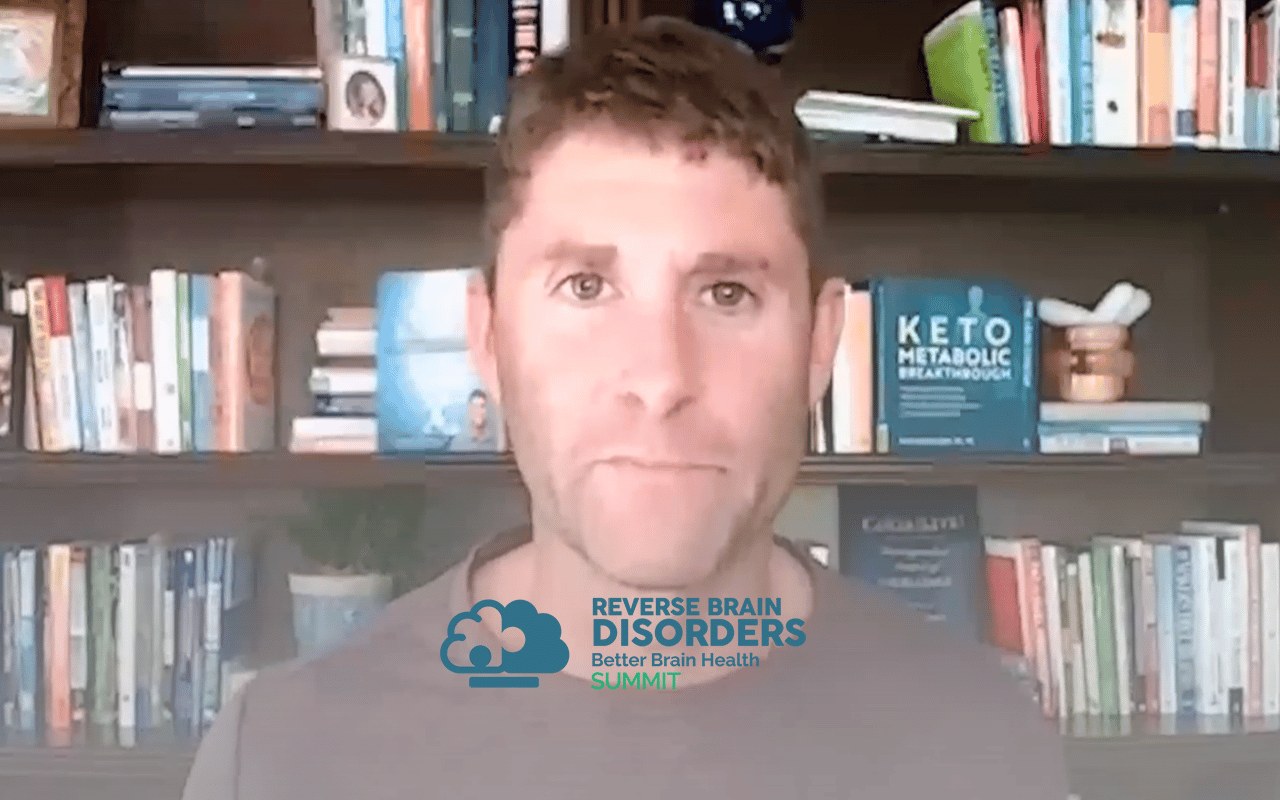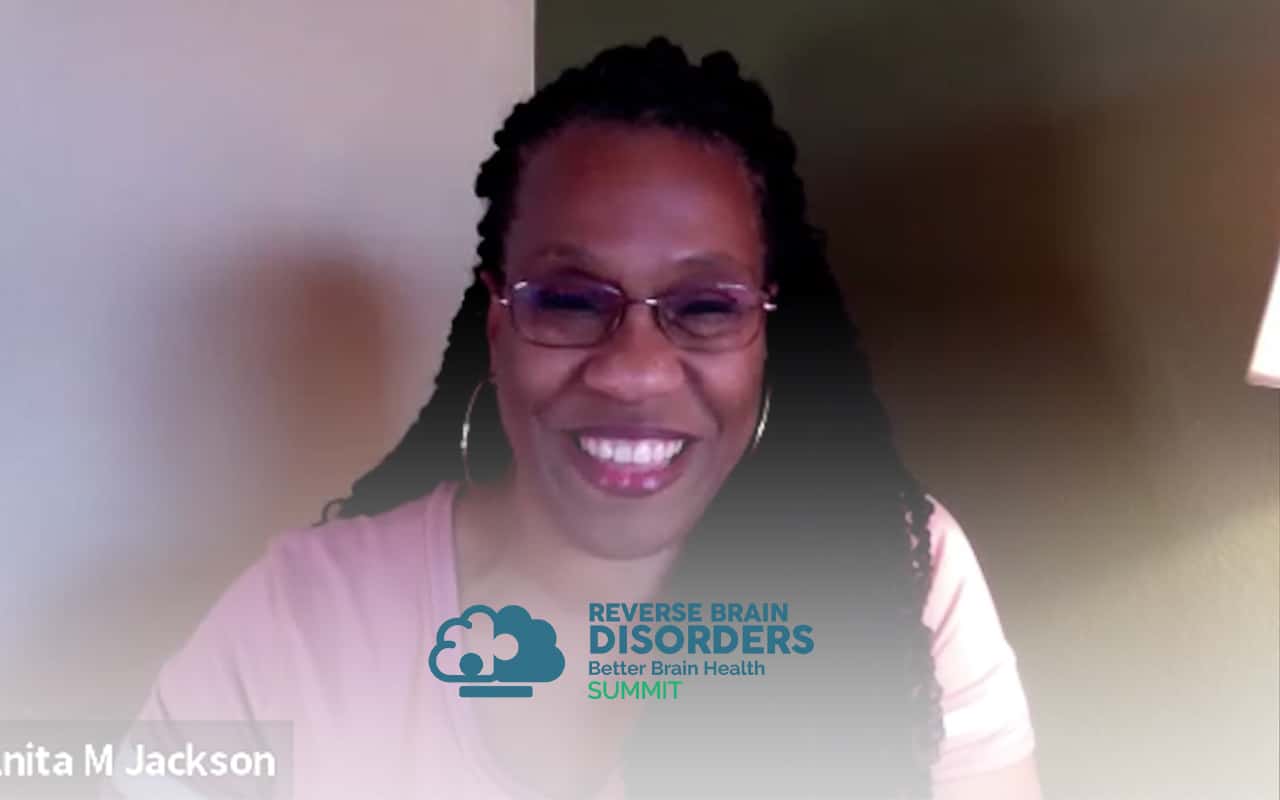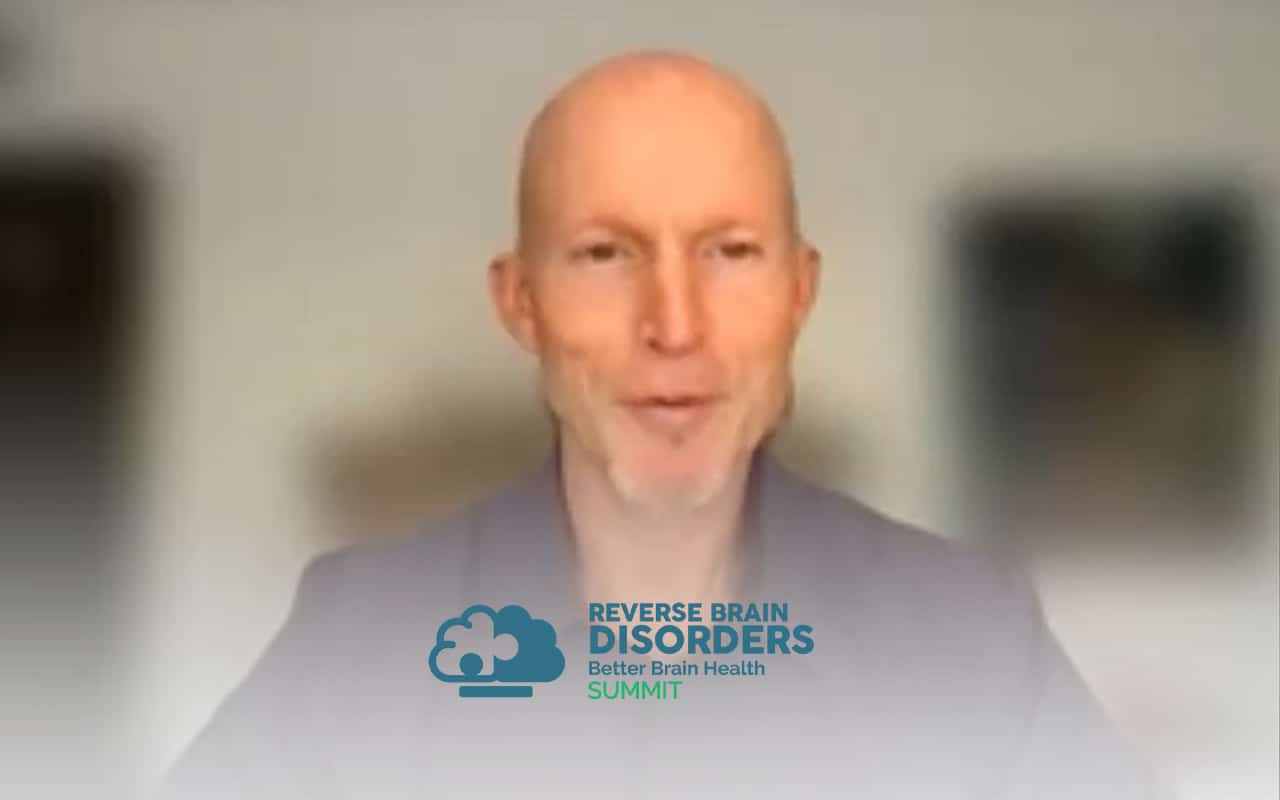Join the discussion below

Jason Prall is a health educator, practitioner, author, speaker, & filmmaker. In 2018, his independent research and experience led him to create "The Human Longevity Project”, a 9-part film series that uncovers the true nature of chronic disease in our modern world. He’s currently finishing his first book titled, “The... Read More

Dr. Zayd Ratansi (known as “Dr. Z” to his patients and colleagues) is a licensed Naturopathic Physician and a global authority on hyperbaric, bio-oxidative, and environmental medicine, as well as low-level light and chelation therapies. He is a trainer for hyperbaric oxygen therapy, has an IHA-approved education and training course... Read More
- Using hyperbaric oxygen to prevent brain injuries
- Typical hyperbaric protocols for various brain-related conditions
- How hyperbaric oxygen improves dementia & Alzheimer’s
- Finding a good clinic or at home option
Jason Prall
Well I’m so excited to welcome our next guest Dr. Zayd Ratansi known as Dr. Z to his patients and colleagues is a licensed naturopathic physician and global authority on hyperbaric bio oxidative and environmental medicine as well as low level light and coagulation therapies. He’s a trainer for hyperbaric oxygen therapy and has an A I. H. A. Approved education and training course for safety and operation. And he has established and manages a research based website for hyperbaric therapy at hyperbaricexperts.com. Dr. Z also worked with boxing legend Muhammad Ali to help him fight Parkinson’s disease. He serves as an adviser to athletic trainers, team doctors and practitioners and the lead athletes to help them implement personalized protocols for performance training and recovery. He also has extensive training in environmental medicine and has helped implement safety, toxification and cleansing programs along with hyperbaric oxygen therapy within the spa industry helping to advance medical spas throughout the world. Dr. Z welcome.
Zayd Ratansi, ND
Thank you very much. Thanks for the introduction.
Jason Prall
Well we, as we were chatting a little bit beforehand, you told me that you had been into hyperbaric oxygen for over 20 years. So I’m curious how you kind of made your way into this industry because you know, 23 years ago or so. It wasn’t a big thing. No, no, actually it’s quite interesting.
Zayd Ratansi, ND
I went to a medical conference in my last year of medical school and naturopathic medicine and you know trying to figure out what I was going to do and went to a conference that all the best doctors in my field go to because I wanted to go and see what are they doing on their continuing education for therapeutic interventions at at conferences. And there’s one conference or one lecture on hyper American wound care and I saw the science, I saw the research and I saw the application and I saw what it can do. And then I asked the question where I haven’t learned about these chambers for wound care and where are they? And in Canada where I started my practice, where I was going, I did my university in Washington State and then went up to Canada to practice and there’s only nine hyperbaric chambers. And they were in hospitals. And so there wasn’t any hyperbaric. And so I said well this is a good thing to do. And so I started with a group of individuals, the first private multi place hyperbaric chamber in Canada for private use. And within three days of opening with a nine month waiting list.
And with about five hotels contract out one month stays for people coming in for hyperbaric. And who were these people there were kids with their parents coming in for cerebral palsy. They were stroke victims, their head injuries, brain injuries. And it sort of made sense to me when I started because wound care we think wound care and it works it can help wound care that much. And then what about the brain and the brain wound? So it became really, really my first, I would say six months into practice, I saw things that really changed the trajectory of where, Where I was moving towards into my practice and I went full on into really helping with hyperbaric oxygen gain access worldwide. But in that time people were flying in and they were saying, Why can’t I get something around me? It was all about access and I remember doing a talk and there was about 3000 people.
And how many people have heard about hyperbaric oxygen? They wanted me to talk about hyperbaric and I had a handful of hands go up. It just wasn’t really known at that time and I’m seeing the potential benefits. So that’s really what got me started. And that first six months of seeing what I saw of patients in comas that were getting recovery kids with cerebral palsy that were regaining strengths and muscle coordination And there was something going on. So then slowly and slowly, more and more science and research and applications started getting into the hyperbaric and then there became a hyperbaric movement not long ago in the past 10 years, you’re seeing more and more now I do a talk and almost all hands go up on who’s sort of hyper barracks.
Jason Prall
Yeah, it’s interesting. I, as a former athlete in college, fairly high level athlete. I remember seeing hyperbaric oxygen used in the athletic world right, particularly I think in the NFL is when I first heard about it, is these high level elite NFL guys using having these chambers at home that they would go, you know, essentially sleeping right and take naps in and these type of things. And so that’s kind of how I got introduced to it. And then as I got into studying, you know, naturopathic medicine and integrative medicine, functional medicine, ayurvedic. There is this interesting kind of balance where, you know, we wanna use nature’s principles and use nature’s substances and work with the natural principles natural cycles, right? And then we come up with these things like hyperbaric oxygen, which is almost on the complete end of the spectrum, so to speak, in the sense that it’s artificial and yet we’re still coupling it with natural principles in the body. Right? And and so it’s it’s a really fascinating kind of time that we’re in and I think there’s a ton of opportunity with the sort of regenerative medicine kind of movement that we’re seeing with all kinds of new therapies that are coming online coupling that with fundamental principles, you know, from, from naturopathic medicine, Ayurveda and these type of things. To me, it’s like a super exciting time to couple these things together. I’m curious how you, how you kind of go about doing that when you’re working with, you know, any kind of head injuries or or neurological symptoms, anybody that comes in, you know, how are you using these sort of in conjunction with one another.
Zayd Ratansi, ND
Well, excellent, excellent question. I’m glad you said that because we have to think of other disciplines, oxygen is helping to combust carbon in food for cellular energy. But you still need to think about it as a car. You could gas up a car. That’s great. But you still need a motor and you still need mechanics. You still there’s a system. But why I’m so passionate about hyperbaric oxygen is because every cell is metabolically active that utilizes oxygen. So take your discipline, take ira vedic, take any discipline, take oncology, take cardiology, take physical medicine, physical therapy, sports trainers. Any profession relies on metabolic activity, right? And oxygen dependent ophthalmology oxygen dependent. So if we understand oxygen oxygen physiology and then dose a surplus of oxygen alongside Complementary therapy. So if we can really train practitioners well on hyperbaric physiology and then they use that application. Now take neurology for instance.
Saying that you asked the question of neurology and I started in that field, the brain itself, let’s say the brain takes up 25% of your oxygen right now. Now that is normal and and think about the brain it only weighs about 3% of your body weight. So an organ that weighs 3% of your body weight, consumes a quarter of the oxygen that gets into your blood from your lungs 25%. And because the brain is so metabolically active, we need oxygen, right? And so when we’re in hyperbaric physiology, the application of hyperbaric is you’re inside a chamber and you’re just getting more oxygen in the best way I could call it as a glorified oxygen supplement. What you’re doing is you’re dozing more oxygen into the blood. But what’s interesting with this dose, the oxygen doesn’t go that surplus of oxygen when you’re in the chamber, doesn’t go on to red blood cells like normal delivery, you’ll get some extra. But the extra dose, it’s a gas pressure law of physics. It’s Henry’s law of physics, it’s an absolute law. More pressure. More oxygen in liquid. That’s the liquid that the red blood cells are going in. So if you take blood and you center for you spin it and laboratory, you’ll see all the red blood cells go down and then there’s about two thirds of liquid called plasma. So all that oxygen is going in a free form in liquid. Well, the brain is bathed by liquid cerebral spinal fluid, so all of a sudden you’re in the chamber and your heart beats And then it beats again and it beats again. Let’s say 60 times in a minute. That’s six street dosages of extra oxygen and liquid that now get into the liquid surrounding the brain and into the fatty tissue of the brain. Now the brain gets extra oxygen and extra energy, okay, oxygen energy don’t breathe for five minutes, not much energy. So you’re energizing the brain and just like when we’re treating wounds and we’re doing wound care, you’re creating more oxygen and cellular energy to where the wound is. And if you cut your skin, skin heals, the body knows as an innate ability to heal but were oxygen dependent, energy dependent.
So all we’re doing is saying, hey, we’re gonna give more oxygen and we’re going to have the brain treat itself. And that’s what we really saw when we’re looking at a brain injuries starting off, But then you start seeing what is the mechanism of action and what in and what we found some of the key mechanism of action for the brain is when you get that surplus of oxygen within 24 hours we get a response. A protection of the brain. So there’s an up regulation because now there’s no more metabolism. So within the brain cells itself, you start getting more, not only metabolic activity, that’s great, that’s function, but you get more protection. It’s called endogenous antioxidants. So you’re protecting the brain. Some of these enzymes are glutathione, peroxide catalyst, superoxide dismissed tastes, and what’s happening because you’re getting more combustion and you’re getting more protection.
Think of it like back when I give you that analogy of the car and you put gas in a car, you get you know you get combustion but you get exhaust right? So you need to have more exhaust system if you don’t use the car for a while it might not have that all going. So now what you’re doing is you’re peaking the cells back into metabolism and then all of a sudden the exhaust system comes but it’s inside every cell because you have to protect the fragile D. N. A. And that’s why every cell has its own antioxidant species that we make. We don’t take it in pills. We absolutely have it in its oxygen and oxygenation that causes that reaction. And now the brain is protected. The second protection that happens is with something that you’ll see in the brain called inflammation in the brain we call it neuro inflammation. So just think if you hurt your wrist or something you might have a little fluid or you might you might have heard of people being just chronically inflamed right from injuries. But the same thing is the brain can have inflammation. It’s actually quite common especially in neurodevelopmental disorders, neurodegenerative conditions. Parkinson’s, Alzheimer’s and then neurological insults like head injuries, inflammation. So those two happen quite quickly but then one of the most powerful things that we see in hyperbaric delivery for the brain is we will get stem cells bone marrow derived stem cells that now the body is in energy mode. So we start creating brand new cells. Okay, stem cell mobilization is what it’s called? One study where they applied hyperbaric oxygen at two atmospheres causing 800% increase in stem cell mobilization. This was in 2006. That was a landmark studies that that is what really made us look and say, hey, there’s a whole other mechanism of hyperbaric oxygen therapy and but then we didn’t think it went to the brain. Right? But then they started tagging and they looked where these stem cells were going and they found that the brain, it’s called neurogenesis neurogenesis genesis the new formation of brain cells. So the application of hyperbaric started helping for this process of repairing new brain cells and then something called Andrew genesis. New circulatory pathways, two damaged parts of the brain. And now we can understand a lot better of the influence of hyperbaric oxygen for neurological injuries and recovery programs.
Jason Prall
When you’re getting down to the core I think of really a lot of disease processes, particularly chronic disease right? When we get down to inside the cell and metabolically active organs like the brain, the heart, the liver, the kidneys, we got a ton of mitochondria. Right. And what do we call the powerhouse of the cell. But they do so much more. Right? They produce hormones, they clean things up. They recycle they produce as you mentioned antioxidant defense systems. Right? So there’s so much going on at that mitochondria level. And I’m curious if, you know, you hit on something really important I think, which I think was the initial my initial introduction to the physiology which was that there’s this sort of functional hypoxia, right? There’s a lack of oxygen at the cellular level. And while we might not call it, you know hypoxia in broad terms it’s functionally hypoxic, there’s not enough sort of oxygen.
And sort of that electron transport chain inside the mitochondria is not really churning optimally. So when we kind of get oxygen more perfusion into those tissues then we’re gonna get these sort of this good thing happening, right? More energy production in the form of A T. P. We’re going to get less reactive oxygen species. Perhaps we’re gonna get antioxidant defense systems turning on, you know, there’s the cells are gonna be cleaning up but but this is really fascinating what you’re talking about here with stem cells because this is kind of next level stuff that I think it seems like we’re starting to run into is some of these sort of you know, secondary or tertiary effects that we weren’t fully aware of. And now I think with stem cells kind of taking a big forefront in regenerative medicine. We’re starting to kind of our lenses are gonna are starting to change with regard to stem cells? Right. And so I’m curious what other kind of things we are figuring out that hyperbaric oxygen is really able to do for us.
Zayd Ratansi, ND
Well, it’s in the hyperbaric that doesn’t do any of the hyperbaric allows the body to do for itself at its peak performance. You know, when you talked about mitochondria, what we see is something called mitochondrial biogenesis. And what that means is more of these power houses within itself. Well, yeah, hey, if I’m in spending mode because I got lots of energy, physiological energy, real energy for the cell, I’m gonna create more mitochondria and it’s gonna be this vicious cycle of energy, right? And I think one of the biggest is that cardiovascular, you know, I I can tell you aging is really a disease. As we look at it, the blood vessels start narrowing, narrowing, narrowing, narrowing and we slow down. This happens at birth at five years of age, we start seeing fatty streaks, inflammation In the arteries by adolescents, you’ll see that normal. You know, it’s normal to have arteries that are calcified and have plaque in them.
And some people are 30% blocked here, 80%, 90%, 100%. And they’re walking around why because the human body is so resilient. And that when you talked about that hypoxia, you know what’s fascinating? The body’s defense to hypoxia is angiogenesis to create new blood vessels? Okay, think about that as we as these. My analogy is very simple to L. A. Traffic, right? So, you know, when roads were first put in five lanes 10 lanes, no problem. These kids that are five years of razors, 10 lanes going to the brain, right? There’s no problem at all with oxygen or energy cellular, right? There’s no blockage, there’s no restriction. As we start aging eight lanes, six lanes two lanes, there’s highway disease everywhere. And naturally take anyone who has never been in a hyperbaric chamber and ask any cardiologist and what you’ll see is you’ll start seeing and your genesis, it’s the body’s way of, hey, you know what we’re budgeted just like every county says, well we’ve got to build a new road but we only have a certain amount of money, you know, so there’s a little budget on that.
And so what happens is, so the stimulus is hypoxia, but when you get hyper oxy, when you go into the hyperbaric chamber, what do you do? You get extra energy? So now you’ve got the budget so you start so you want to go what we call relative hypoxia and then hypoxia. So you get this stimulus of I wanna it’s called vascular endothelial growth factor, new growth factors being produced in and the that surplus of oxygen and energy with the hyperbaric. So that’s why typically hyperbaric is dosed in very short periods of time. But repetition frequency, just like if I’m taking a course of antibiotics, I’m gonna do it regularly for a short period of time. So we call it repetitive hyperbaric therapy. And typically a lot of times we’ll see. Remember that program. I told you when I first started, we did this one month protocol where patients came in and in one month we saw a lot of stuff going on that was daily sessions for a month twice a day. And that’s it. And just a really high influence of high and low and high and low and really getting a lot of physiological support and change for the body.
Jason Prall
You know, there’s something called hormetic stress, right? And this is something that anybody that exercises right? You exercise and then the body and and look the body is constantly it’s an open system, right? So it’s constantly picking up energetic signals, be they thoughts or emotions or physical signals or whatever the case is in this case oxygen, right? Heavy, relatively heavy dose of oxygen. So the body is going to receive this signal and it’s going to respond accordingly. Right? And that seems like what you’re doing is you’re just repeating this sort of hormetic stress and the bodies then adapting to this new signal in a way that of course it knows how to do and what you see is an increased function over time.
Zayd Ratansi, ND
Exactly. So what happened with the aging and degeneration is adaptation towards disease were changing. You get short, intermittent amounts of oxygen and what you’re doing is you’re stressing and adapting stress but on a way to support physiological health and wellness within the human tissue and cells.
Jason Prall
And you’re doing so at the sort of micro level. Right? That’s what’s so cool. You know, again, if we were to take something like sunlight, right? Or exercise, these are probably the most some of the most prominent hormetic stressors where for and everybody’s different. Right. This is what’s interesting. Right? It’s sunlight. You and me very different in the sunlight. Right. It’s not gonna take me much before I reach my limit and then, But I’ve got to let my skin, my body sort of recover and if I go too hard, I can actually tip over into sort of negative consequences as a result. Same thing with exercise, right. I can push myself too hard and do things too often. And if I don’t give myself enough recover time, which may be different for each individual. Right? It may be different for me at 18 versus me at 60. Right then then so this is kind of this individualization that happens. And so I’m curious how you’re using that with your patients. If there’s sort of a feel that you get as an experienced practitioner or if there’s protocols depending on what you see, walk in your door.
Zayd Ratansi, ND
Good question. I think it’s we start off with protocols and then there’s always personalization and you know some people might feel you know after doing some sessions they get more fatigued then hey let’s change that at nighttime. Hey, why don’t we double dose in a day. Why don’t we just do one session a day? Time 75 minutes 90 minutes 60. But you know what there’s standard just like you’re taking any standard medication. So there’s standard protocols that we have in hyperbaric delivery. I try to stick to standard because I follow the research and you know we want to replicate the research, hyperbaric is not F.D.A. cleared for treating any of these conditions. So the way that I look at it is just health and support physiological dose of extra oxygen. And protocol based that allow patients to respond to exactly what you said health and wellness. Right? So it’s just going the other way. Think about what we talked about regeneration. What happens as we age, degeneration, chronic degenerative diseases, Osteoarthritis, degenerative disc disease, degenerative eyes, macular degeneration, aging blood flow oxygen. So we get low oxygen, low blood flow and a lot of people say oh it’s the air that we breathe. Well no I’m still at 97, 98, 99% on my pulse ox.
This system of lungs is great. It’s just when the heart pumps it there’s resistance. Blood pressure goes up. there’s all this blood vessels and the microcirculation, diabetes, blood sugars basically spill into the small blood vessels cause small blood vessel disease. And now you’re damaging split flow. And cardiovascular one of the number one killers. But the way I look at it is I don’t think about that. I think what about the degree of disability that it causes? If you know, it might not have, who knows? What’s one of the first science? It’s a heart attack. You’re gonna wait for a sign. So, you know, and and and so that’s why it’s this holistic application of hyperbaric where it’s not selective to any part of the body, it’s the whole body. But as you improve blood flow, what happens is the brain gets the recipient of it. So after a month of doing some of these standard protocols now we can have better oxygenation. It’s not gonna taking the plaque out, right? But having more blood flow to organs and organ systems.
And so, you know, that’s why when we talked about the benefits of hyperbaric for the brain, the immediate effects. Yes. But the long term effects. And then you think how how many people are around dangerous harmful chemicals, either in their workplace or home place environment, these are called neurotoxins. And you could smell it, it goes into the roof of the palette. You get these metals, mercury lead and what do they do? They damage the brain. They cause oxidation. So if you pre condition your brain with hyperbaric, you’re more protected. Not that you want to go and do hyperbaric. So you can go into toxic fumed environment, you know. But in today’s society we could be more protected. You know, you talk about more protection. I do a lot of concussion treatments with hyperbaric and we do preconditioning, right? People who are at higher risk football players who are maybe already had a previous concussion or any contact sport where the head can be involved. We like preconditioning before the game, right? To help that brain be stronger for protection. And so that inflammation and oxidation. That protection is very important in the long term scheme of things. And sometimes the neurological issues that are going on are from environmental, what we call neurotoxins that get into the brain.
Jason Prall
Well, anytime you can increase function of the brain and increase oxygenation, you’re increasing neurogenesis. Right? You’re gonna start to increase hopefully lymphatic clearance. Right? So you’re starting to clear these toxins out of the brain. You know, you’re shutting down your info, shutting down neural inflammation is huge, right? I mean, especially with some of the glial cells that can essentially get stuck on, so to speak, Right? Like, I mean, this is this is a major issue with with a lot of people that experience all kinds of neurological symptoms and conditions you mentioned, concussions and I’m curious if there’s there’s any neurological condition or brain related issue that you’ve seen that hyperbaric oxygen does not work well with or that you need to be particularly cautious when you approach it.
Zayd Ratansi, ND
That’s a very good question. There is so if somebody has seizure activity, you want to be careful of what we call oxygen toxicity, seizure, hyperbaric can’t cause epilepsy, but it can induce a oxygen toxic seizure. But that’s when we dose it really high. We try to stay below that threshold. And we have standard routine applications to help do that. But sometimes someone has carbon monoxide poisoning and it’s life threatening and they need to be at a very high dose. Then we take precautions for that. And sometimes there are risks that are associated with that. I tend to recommend lower dose because the brain doesn’t need much. It is, it’s already so oxygen dependent and that physiology is in the liquid. Hey, they’ve done head to head studies on very low pressure compared to higher pressure and seen in similar outcome in studies in cerebral palsy. They did a study the University of Wisconsin just recently. I don’t know if it’s published yet, but they found just a low pressure, not even putting on a mask, Just air had a tripling effect after just one session of stem cell mobilization. It’s not interesting.
Jason Prall
So, yeah, talk to me about that and it’s I guess it’s sort of in the name but it may not be fully recognized by all those who aren’t familiar with hyperbaric oxygen. In most cases you have a chamber that you’re increasing the pressure, right the atmospheric pressure in. And so talk to me about that pressure and how that works with oxygen. And I guess in that tank two or is it a higher percentage of oxygen in the air in the atmosphere? Or is it standard air that we’re working with?
Zayd Ratansi, ND
Excellent. Excellent question. Traditional hyperbaric. You know when hyperbaric first got discovered in 1662 your but what you’re doing is you’re dozing pressure and you’re dozing oxygen. Okay so 2 drugs extra oxygen by a mask or in the hospitals we put a hood. Some wound care centers just have the whole chamber pressurized with just oxygen. So they don’t have any breathing apparatus. And remember the pressure is the big thing that causes more oxygen to dissolve in the body. But now you add more oxygen. You’re breathing apparatus because this is the only place you needed. You don’t get oxygen in your skin. You can’t drink it, you can’t eat it, you can’t bathe in it, you have to breathe it. So just making sure you’re this area has that surplus of oxygen. That’s traditional. What was found when they started doing studies and comparing a placebo to hyperbaric. They didn’t see any, they saw both groups getting improvements. But the problem was the the placebo was a pretty decent amount of pressure. So you’re getting a physiological response, you’re getting more oxygen, you’re getting more drug. And so it then lead us to say well why are we doing this dose if we could have just pressure and air?
Right, so there’s two trains of thought. They and you’re saying okay if you want to have that pressure and air, is there any harm to adding the extra oxygen? And if there’s not then we added in. Right? And because we have an understanding that that will increase the dose but we still don’t have really good data on head to head to show one is more better than the other. It’s thought by a lot of people that okay I’m going to do a higher pressure, I’m going to get a bigger dose. So I’m going to get better results. You know, it’s a difficult one because I could give a medication 25 mg of prednisone. I give you 50 mg of prednisone and they can both give benefit to the patient but one is just double dose. Do I need it? You know?
So it’s understanding I think understanding how much oxygen you’re getting from being even at a low pressure because the dosages every time your heart beats. It’s this extra, you would not have it, it starts accumulating. So you get such a high of an essential nutrient, it doesn’t get wasted. That extra doesn’t just go, it gets utilized for combustion with carbon for energy. What is it? Energizing? I don’t know, everybody is different. You know, I like to think of it like a, when you’re in the chamber, it’s a buffet, right for every cell just says, hey, I got a buffet, I’m gonna take more. You don’t need more. You might not take more, right? But so you’re allowing this extra dose and giving that body in every tissue, every organ, every organ system, the immune system is dependent on oxygen, stronger immune system. So, we tend to, I tend to keep it more simple.
Jason Prall
Yeah, I like that approach and it seems to me that the consistency is really maybe perhaps the biggest key in this, in this whole game. And so talk to me about some of these things that you’re seeing in terms of neurological conditions, brain related conditions that you’re treating. How long of a protocol do you typically see with some of the most common conditions that walk in your door?
Zayd Ratansi, ND
It varies, sometimes just 3 to 5 sessions. I typically call that a jump start. You know, I might do that preconditioning. Like I told you those preconditioning studies, Monday, Wednesday, Friday or in the case of some of the football players Tuesday Thursday, Saturday, and then they play on Sunday you can you know you could do pre surgery, we’re finding like neurosurgery if if we know someone’s going in for brain surgery just getting five sessions before the surgery. You know sometimes it’s not applicable because there’s no time because it’s An emergency procedure. Sometimes if it’s a planned procedure then we like doing just five sessions or so. And then after the surgery there’s another maybe five sessions, 3-5 sessions. We have sometimes 10 sessions if there’s an acute injury, 20 sessions protocols.
If we need a little more of that angiogenesis, the regeneration, the gold standard. Like I tend to say taking a course of antibiotics, you know is this 40 session protocol? It’s what we’ve seen the most results and some people say, Hey I feel great in you know 18. Alright I had one guy, he got he had homogeneous hemi and he had a stroke and he just had central vision, he lost his peripheral and he only yeah so he was very depressed went into this chamber and after his second session he had a significant increase in his visual perception and then third was even more And he had this small black spot on his upper left quadrant, just a small spot and then he did 456789 and then at 17 and he was scheduled for a course of 40 and 17. He said to me I don’t want to do anymore. So okay.
And he said why? He goes well I could live with a small spot. I got back my driver’s license, that’s all I cared about. And you know at the end of the day the time and the finance at the time you know now it’s a little more cost effective. But back before it was quite it was quite a budget for you know you got caregivers and stuff. So you know you’ll find that will tend to apply. The older the sicker the more I want to really help support the body, the more I’ll just write a script for 40 sessions as standard protocol. And then maybe do some internal adjustments. Do a lot of light therapy, transcranial over the forehead or brain where we can get certain wavelengths to increase cellular energy in the brain and also blood flow. So there’s a tagging effect. We call it targeted hyperbaric. That’s done a lot in the chamber. I can’t tell the oxygen will just go here go here. So well we can help and then if they have some type of so after about two weeks we might then start doing some exercises, cognitive exercise of frontal lobe for executive functioning. Then we’ll have them do some memory exercises while they have the light on there in the chamber. So exercise while that. So we’re trying to build these tracks or where if it’s motor control, fine or gross motor then we’ll do those exercises. Right? So it’s, it’s and and that’s when we first started talking about hyperbaric and you said about the various practitioners and a mention when I think aerobatic. But physicians practitioners who are knowledgeable in their skills whether it’s a functional therapy where you can then utilize that for full wellness within that.
Jason Prall
Yeah, I’m curious with cognitive decline whether it be, you know, full blown sort of dementia and Alzheimer’s early stages. I’m curious if you’ve seen any positive impacts. I mean I think that you’re starting to see that early cognitive decline where the handwriting is starting to go. The gate is starting to go these types of things. Seems like a really good opportunity as you start to notice that early, but you’re seeing even later stage stuff.
Zayd Ratansi, ND
And yeah, so we see the early, you know, originally we wanted it, the research was pretty strong on reducing the progression. I thought hey, if we could just reduce the progression, that’s the treatment.
Jason Prall
You mean and by that you mean kind of slow it down. So it’s so fast.
Zayd Ratansi, ND
Correct. But then we started seeing improvements as well, which is cool. You know. Right? And you know what? So now there’s really good studies on mild cognitive decline and cognitive impairment, right? And on Alzheimer’s. Now when I started I had some really good cases on vascular Alzheimer’s and sometimes it’s not diagnosis vascular and have some really good ones vascular of course blood flow. But there’s the latest research really got me excited on amyloid plaques where the application of hyperbaric reduced the amyloid plaque build up. And so now we’re looking at hey and and a lot of it has to do with that reduction of neuroinflammation, reduction of hypoxia, low oxygen and just fueling the cells fueling the brain and letting the brain treat itself. Right? And you know, you can throw a rock at a window or a door like you can affect damage here for Alzheimer’s and here for Parkinson’s, here for M. S. Everybody is only so big and what’s the damage? You know, everyone is different.
But what do we know is how do we repair, how do we functionally help the brain repair itself. And I think if we take that approach of helping the brain repair itself, giving the fuel the nutrients. And definitely nutritional therapy fatty acids. The brain is made up of 60% fat. And so some of these fatty assets are very important and also for what we call neuro growth factor. There’s excellent studies on BDNF brain derived neurotrophic factor with hyperbaric influence. So we’re actually getting so many of these mechanisms actions were understanding of potentially how this application of hyperbaric can help the brain, but that’s just one area then we have other therapists and other interventions that can be added in because every no matter who they are. If they’re a neuropsychologist, anyone that is treating the brain or any organ metabolically active, if there’s no oxygen in what they’re treating the brain isn’t working. Right? So really understanding the application of hyperbaric physiologically and then having application of that. So and and that’s one of the things that we do training in in the for practitioners is how to integrate hyperbaric within the practice. And so make it a tool for application for patients.
Jason Prall
Yeah, I can really see the benefits of stacking this with other therapies and lifestyle interventions. Right. I mean, we know that going out in nature increases BDNF and increases all the feel good hormones, neural hormones in the brain, right? All the neurotransmitters as well as exercise. Right. Same thing. So when we’re starting to stack and change our lifestyle, increase more exercise, increase the sunlight, right? And setting that circadian rhythm in the brain. Getting all the neurohormones and circadian rhythm, rhythm physiology in line with nature hanging out with friends right? And and being around loved ones having that support all these sort of little things that we may not be keenly aware of starting to change those and of course with diet as you mentioned fatty acids and getting the right amino acids and all of a sudden we’re stacking things in our favor to such a large degree.
And again, this is where I see as much as, you know, we like to talk about individual therapies, really dig into those a little bit and find the nuances and the benefits. It’s all of a sudden we start to stack all these things right? And it’s like holy smokes. This is how we go from cognitive decline. Turning back the clock, 15, 20 years, neurocognitive. And it’s like, wow, that’s the opportunity, right? There’s one, there’s one thing I want to ask you. You know, there’s a lot of therapies that we can do remotely now, right? We’re having this call remotely. Technology is fantastic. Hyperbaric oxygen is not really one of those that we can do to, well remotely. I can’t see you on zoom and get some hyperbaric oxygen. So, for those watching this, you know, assuming they’re in a lot of them are probably in the United States or Western countries, how can they find a good hyperbaric therapist? And what should they look for? You know, if they’re trying the interview or or figure out who to go see for some of these more brain related conditions.
Zayd Ratansi, ND
I would look at their local, you know, now there’s more and more hyperbaric centers and, you know, look and see their training how long they’ve been applying hyperbaric oxygen. And so you wanna be able to ask those simple questions and also you know making sure that there’s no false claims being made of treatment conditions. The hyperbaric delivery only has 14 medically approved treatments that we can say yes this is a medical treatment for if you do the lower pressure, then there’s 1/15. It’s called altitude sickness. So really it’s getting the right education of application. And here’s one where if you find that the clinic is I’ll just schedule you in whenever that’s where I see a problem. I see that when I go to England a lot as well with some of the centers that they’re only open on certain times. And so I’ll talk to patients and they just fit in within the schedule. But it’s like me giving you let’s say a bottle of 40 pills, let’s say metformin and I say take this twice a day, 500 mg twice a day and take it for 20 days. Right? And if I see that bottle and six months later you have 12 pills left. I know you haven’t followed that. And it doesn’t mean that that’s not the right application. But most times when people are going in for hyperbaric and they’re making that investment. It’s that repetitive hyperbaric that has a lot of the benefits that you might see those physiological benefits are from that. And so…
Jason Prall
That’s kind of an important part of the therapy.
Zayd Ratansi, ND
Yeah I don’t prescribe off convenience and I think it’s easy to do that and I see a lot of clinics that will do that because they’re just like hey it’s hyperbaric. Just come in. Right? So really understanding we have a wealth of resources. Well they can go to my website drzayd.com. And also there’s the application of home hyperbaric where chambers can be done at home under medical guidance and prescription for I think a month and then they’re sent back there’s a few manufacturers that will do that. And so there’s you know there’s different ways to access and apply hyperbaric and it just depends on you know what what’s around in your area. And again we have lots of resource and there are free resources whether website hyperbaric experts latest research. You can search by the latest or you can search by autism or cancer. And I rewrite it for the lay person to understand. And then it has the link for the hospital and the doctor and physician. So now everybody’s sort of coming together and it’s just it’s a resource just for the community.
Jason Prall
Beautiful. That’s thank you so much for coming on today and sharing your wisdom. Please tell everybody one more time where they can find your stuff.
Zayd Ratansi, ND
So I guess the best is the website D R. And my first name, Z A Y D dot com and there is a dot com and that has a whole hyperbaric section. And for practitioners there’s training and support for home, there’s lots of support, put it that way.
Jason Prall
Beautiful, awesome. Thank you so much. Dr. Z really appreciates you coming on.
Zayd Ratansi, ND
You’re welcome. Well, thank you for having me and I hope the summit goes really well and congratulations on what you’re doing with the exposure of education and functional medicine. Thank you so much.
Downloads

